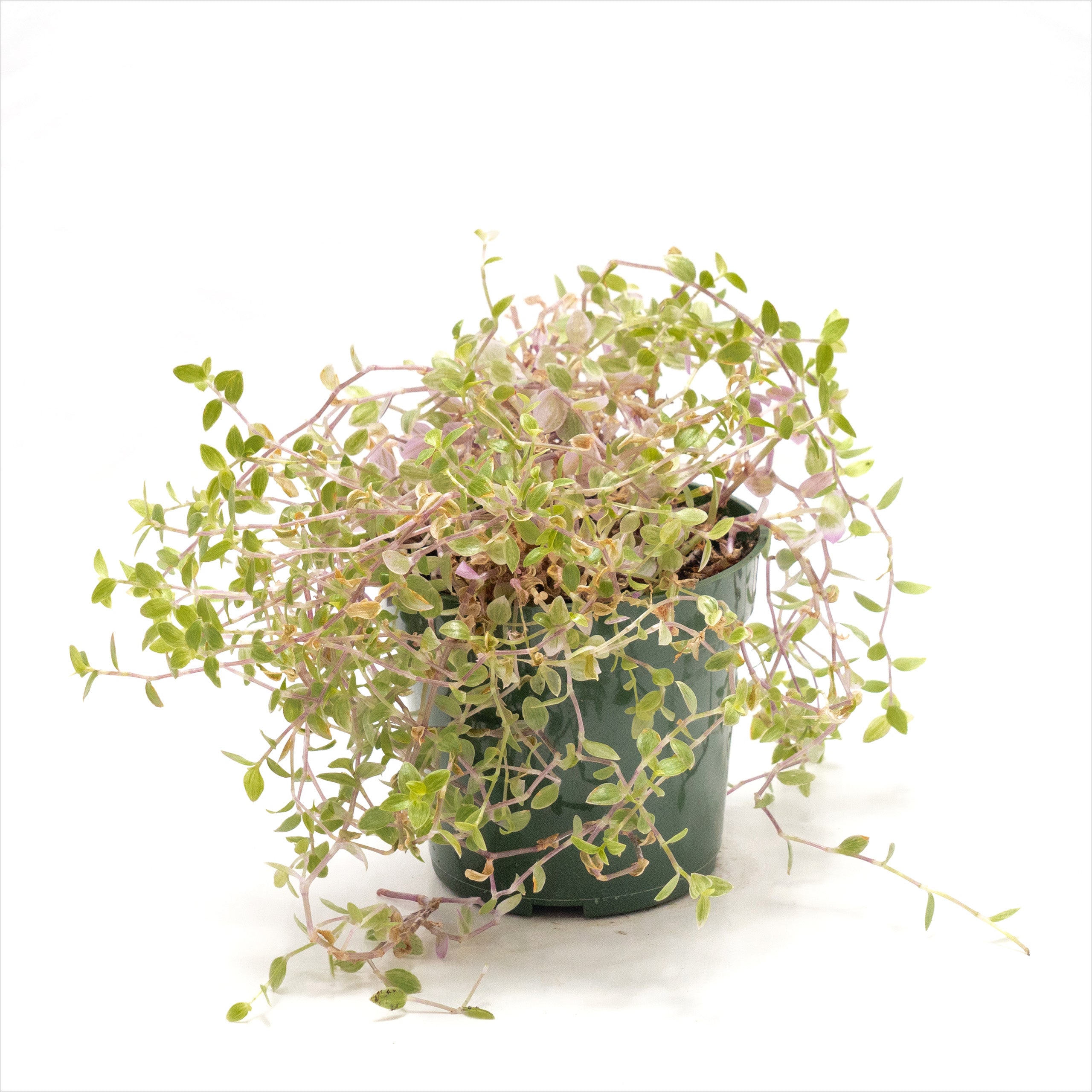
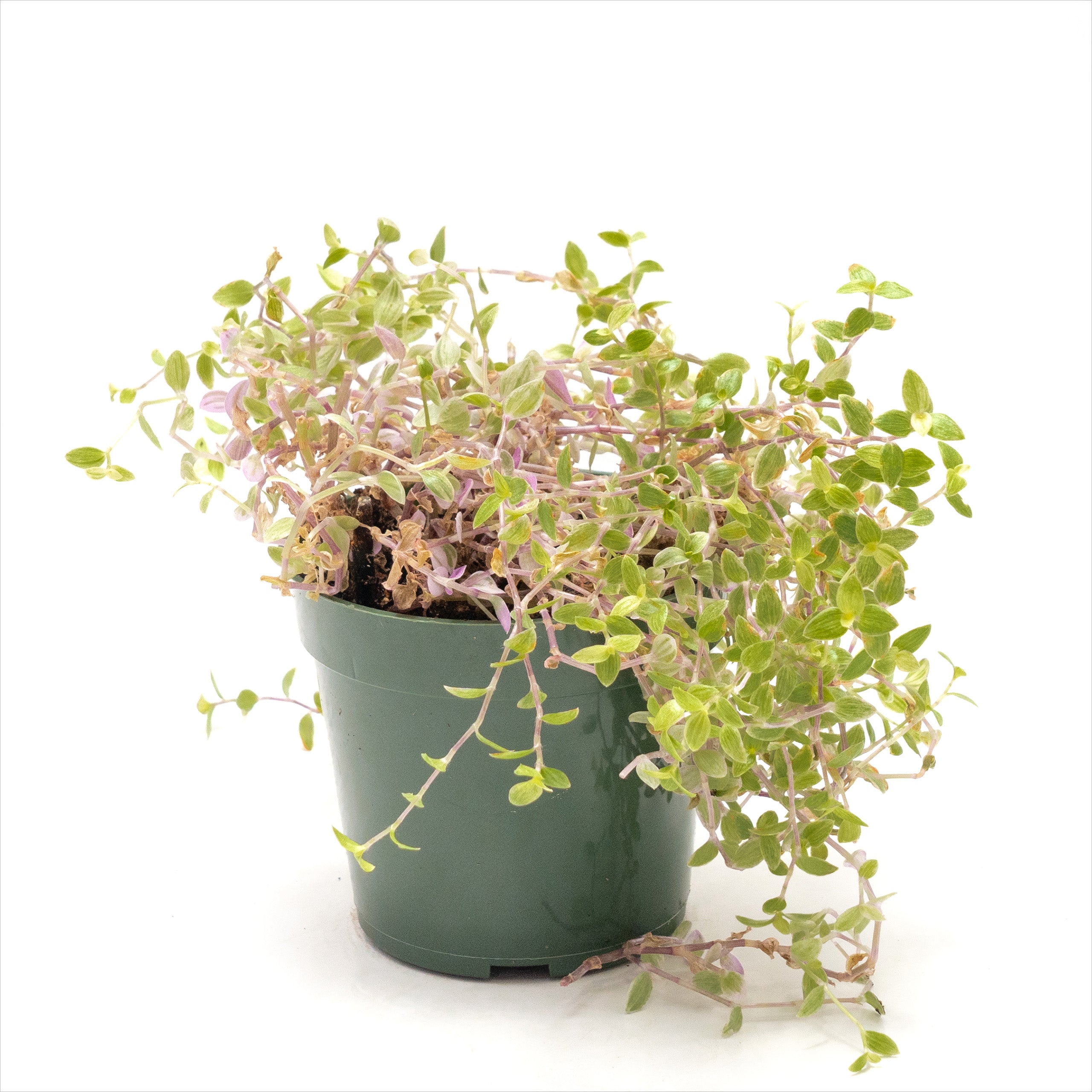
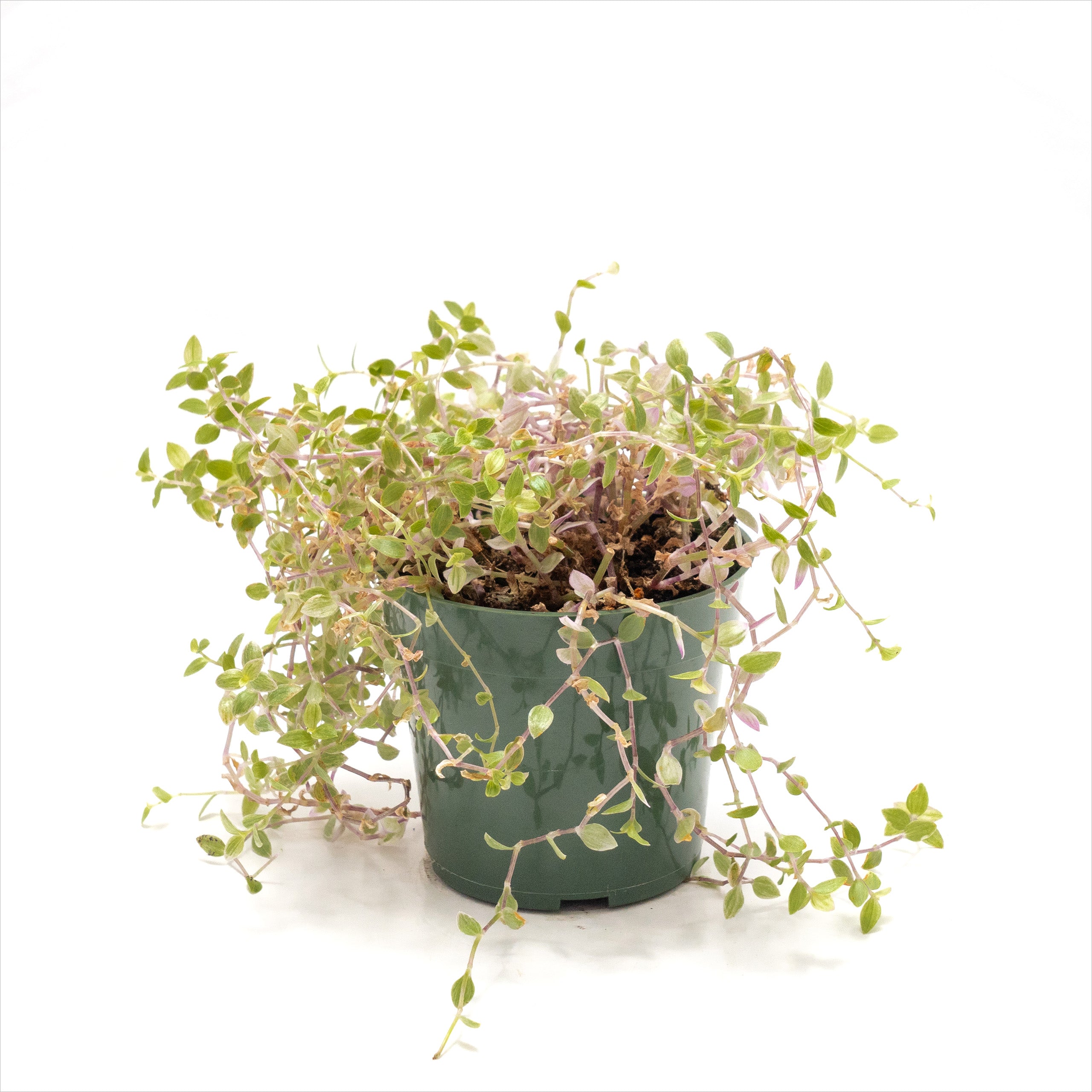
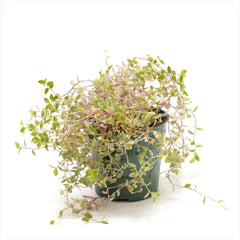
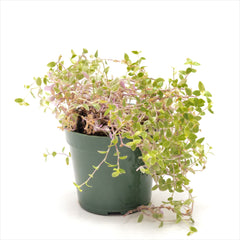
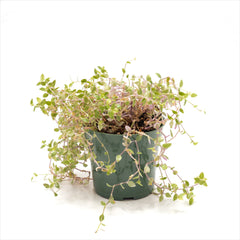
Tradescantia ‘Pink Panther’
Description:
Tradescantia 'Pink Panther' is a striking and colourful houseplant known for its vibrant pink, purple, and green striped foliage. This plant adds an exciting pop of colour to any space, with its soft, trailing vines and eye-catching leaf patterns. The leaves are often variegated, featuring a mix of deep purple and light green, giving it a tropical, exotic feel. Tradescantia 'Pink Panther' is a relatively low-maintenance plant, making it a great option for both beginners and experienced plant lovers. It can be grown as a hanging plant or allowed to trail from shelves or pots.
Watering:
Water when the top 1-2 inches of soil are dry to the touch. Tradescantia 'Pink Panther' prefers to be kept consistently moist, but overwatering can lead to root rot. Ensure the pot has proper drainage to avoid water pooling at the bottom. In the Winter months, reduce watering frequency as the plant’s growth slows.
Fertilizer:
Feed with a balanced, diluted liquid fertilizer once every 4-6 weeks during the growing season (Spring and Summer). In Fall and Winter, reduce fertilizing, as the plant’s growth slows. Avoid over-fertilizing, as this can lead to leggy growth or burning of the leaf tips. A well-balanced fertilizer will encourage vibrant foliage and healthy growth.
Lighting:
Prefers bright, indirect light. While Tradescantia 'Pink Panther' can tolerate some direct sunlight, too much direct light can scorch the leaves and cause the colours to fade. In lower light, the plant may become leggy and the variegation may become less pronounced. For best results, place it near a bright window with filtered sunlight.
Temperature:
Thrives in temperatures between 65-75°F (18-24°C). Tradescantia 'Pink Panther' is sensitive to cold, so it should be kept away from drafts and areas with temperatures below 50°F (10°C). A warm, consistent environment will help maintain its vibrant foliage and promote healthy growth.
Humidity:
Prefers moderate to high humidity. While it can tolerate average household humidity, it will thrive with higher humidity levels. In dry conditions, the edges of the leaves may start to turn brown, so consider misting the plant, using a humidity tray, or placing it near a humidifier to maintain optimal humidity levels.

